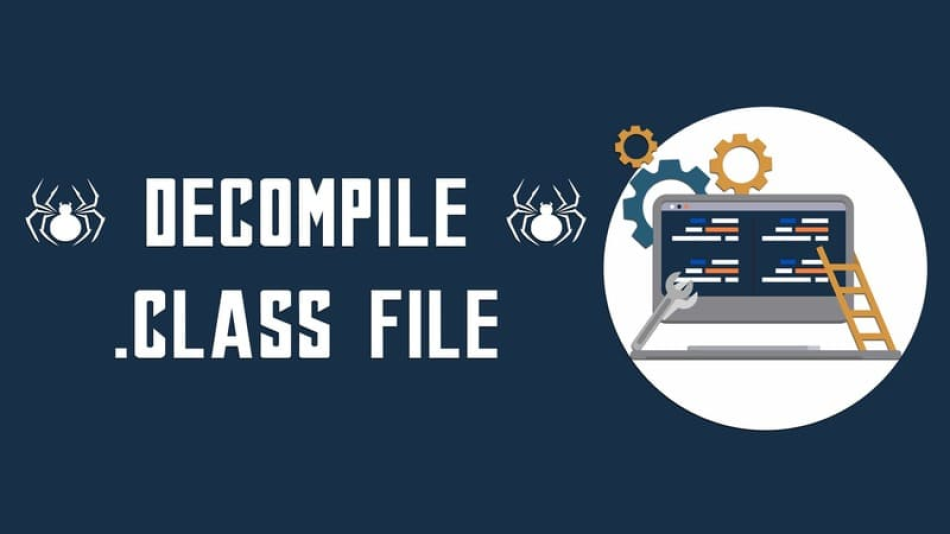Decompile .class Files in Java: Tools and Techniques
 Tuanhdotnet
Tuanhdotnet4 min read

1. What is Decompilation in Java?
Decompilation is the reverse process of compilation. In Java, source code written in .java files is compiled into .class files containing bytecode, a platform-independent intermediate representation. Decompilation translates these .class files back into human-readable .java code.
Decompilation serves multiple purposes:
- Debugging: Understand third-party libraries or legacy code when the source is unavailable.
- Recovering Lost Code: Retrieve readable source code if .java files are misplaced.
- Learning: Analyze how libraries and frameworks are implemented.
- Security Auditing: Identify potential vulnerabilities in compiled code.
Decompiling a .class file is not perfect:
- Obfuscated Code: Libraries may use obfuscation tools to make reverse engineering harder.
- Loss of Comments: Decompiled code lacks comments, making it harder to understand.
- Optimization Artifacts: Compilers often optimize code, producing decompiled outputs that differ from the original source.
2. Tools for Decompiling class Files
There are several tools available for decompiling .class files. Let’s explore their features, usage, and limitations.
2.1 JD-GUI: A Popular Standalone Decompiler
JD-GUI (Java Decompiler GUI) is one of the most widely used tools for decompiling .class files into readable .java source code.
Step-by-Step Example
Download JD-GUI: Visit the official website and download the tool.
Open a .class File:
- Launch JD-GUI.
- Drag and drop the .class file into the interface.
View Decompiled Code: The decompiled code appears in a structured tree view.
While the output closely matches the original source code, any comments or formatting in the original .java file will be missing.
2.2 FernFlower: IntelliJ’s Built-in Decompiler
FernFlower is the decompiler integrated into IntelliJ IDEA, a popular Java IDE. It offers seamless decompilation within the development environment.
Using FernFlower
Open your project in IntelliJ IDEA.
Navigate to the .class file in the project explorer.
IntelliJ automatically displays the decompiled .java source code.
The decompiled code will look similar, but method annotations, if present, might differ slightly due to compilation optimizations.
2.3 CFR: A Command-Line Decompiler
CFR (Class File Reader) is a robust command-line tool that handles even complex bytecode.
Steps to Use CFR
Download the JAR file from Benf.org.
Run the following command:
Key Features
- Handles Java 8+ features like lambdas and streams.
- Works well with obfuscated code, reconstructing variable names.
2.4 Procyon: Decompiling Complex Bytecode
Procyon is another powerful decompiler, particularly effective with modern Java features like try-with-resources and generics.
Example Usage
Download Procyon from its GitHub page.
Run the decompiler:
java -jar procyon-decompiler.jar HelloWorld.class
3. Techniques for Handling Decompiled Code
Once you have the decompiled code, you might face challenges understanding or utilizing it effectively.
Interpreting Decompiled Code
Decompiled code may differ slightly from the original due to compiler optimizations. For example:
- Temporary variables might be introduced.
- Unused imports or methods might be omitted.
Reconstructing Project Structure
If you’re decompiling multiple .class files, tools like JD-GUI allow you to view an entire project structure, making it easier to navigate and understand dependencies.
4. Ethical Considerations and Best Practices
Decompilation is typically allowed for educational purposes, debugging, or security auditing, but it may violate licensing agreements. Always review the terms of use for third-party libraries.
Respect intellectual property rights and avoid decompiling proprietary libraries without permission.
5. Conclusion
Decompiling .class files in Java is a valuable technique for developers. By using tools like JD-GUI, FernFlower, CFR, and Procyon, you can retrieve readable source code and analyze it effectively. Whether you’re debugging, recovering lost code, or learning from libraries, mastering these tools and techniques is essential.
If you have questions or would like to share your experiences with decompiling Java files, feel free to comment below!
Read more at : Decompile .class Files in Java: Tools and Techniques
0
Subscribe to my newsletter
Read articles from Tuanhdotnet directly inside your inbox. Subscribe to the newsletter, and don't miss out.
Written by

Tuanhdotnet
Tuanhdotnet
I am Tuanh.net. As of 2024, I have accumulated 8 years of experience in backend programming. I am delighted to connect and share my knowledge with everyone.